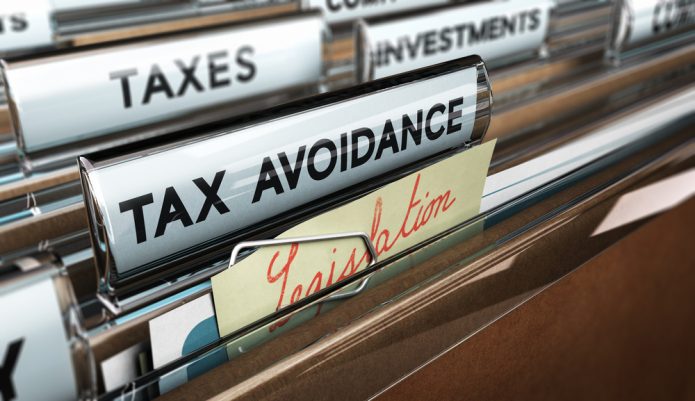Reuters reports that President Donald Trump and congressional Republicans are now tackling tax reform. Staffers are working straight through the August recess, with proposed legislation expected to be released in September.
Among the goodies expected in the new legislation: a lowering of the corporate income tax rate from its current level of 35 percent. President Donald Trump is seeking a reduction to 15 percent. Many Republicans in Congress are favoring a new 20 percent corporate rate.
Either cut, once enacted, would almost certainly trigger a feeding frenzy of tax avoidance. Here’s why: Tax avoidance planners seize on distortions in the tax law. One example: The current tax rate applicable to capital gains runs substantially lower than the rate for other income. So tax avoidance planners have developed strategies that cause non-capital gains income to be characterized as capital gains.
This particular distortion sits at the heart of the so-called carried interest loophole, the end run around taxes that lets ultra-rich hedge fund managers treat the income from their fund management work as investment income — and pay taxes on this income at the lower rate that applies to capital gains, while avoiding, at the same time, employment tax entirely.
Under current law, individual income tax rates top out only slightly higher than corporate income tax rates, 39.6 percent for individual taxes as opposed to 35 percent on the corporate side. But this small gap doesn’t have much of an impact. Avoidance planners seldom try to convert what otherwise would be individual income into corporate income. Why bother? Corporate income, after all, faces another round of taxes once distributed out to shareholders as dividends.
So avoidance planers see no upside in the long run to lodging individual income in a taxable corporation. But that would change — and dramatically so— if Congress dropped the corporate income tax to half or less of the individual income tax rate, with a 20-percentage point or so differential in the respective rates.
Indeed, at the rate differentials Trump is seeking, the total tax due from the corporate income tax rate and the rate on dividend income received by individuals would still, taken together, come to less than the individual income tax rate for America’s most affluent taxpayers.
Which means that any deep-pocketed individuals who can lodge their income in a taxable corporation instead of in their own column would be able to avoid tax by doing so. Yes, these deep pockets would pay tax on the dividend distributions they receive, but those payments could be delayed for years, even decades, and the total tax might still be less than if our tax avoiders had paid tax at individual rates up front.
If Trump gets his way, would all this gamesmanship end up showing up as a shortfall in corporate tax receipts? In an insidious way, no. The tax avoidance planning triggered by a lowering of the corporate rate would have the effect of transforming individual income into corporate income. The corporate tax base, as a direct result, would increase and offset the revenue loss from the rate reduction.
In fact, the more avoidance planning that takes place, the greater the corporate tax receipts.
Of course, the corporate tax revenue numbers wouldn’t reflect the hemorrhaging in individual tax revenue almost certain to result from the corporate rate cut.
We have, in other words, the ultimate in cynical tax policy. If Trump and like-minded lawmakers (including some on the Democratic Party side of the aisle) succeed with their corporate tax cut plan, we would be likely to hear about the unbelievable effect this cut goes on to have on business activity. Arthur Laffer and his minions would ballyhoo the results as vindication for the Laffer Curve and trickle-down economics.
But this would, of course, all be a lie, albeit a damn difficult one to refute. Total tax revenue will have plunged, but ordinary Americans will not understand the cause. Most just won’t grasp the connection between a corporate tax rate cut and a plunge in individual tax receipts.
Would anything in Trump’s plan work to avoid this result? Ironically, yes. The Trump plan does include one notion that would likely decrease individual income tax revenue in a more direct fashion, without the need to convert individual income to corporate income. You see, Trump also wants a lower tax rate, comparable to the lower corporate rate, for businesses structured as “flow-through” entities — partnerships, S corporations, and limited liability companies. The income of those entities gets taxed to their owners at individual rates, under current law.
If Trump gets his way on that front, we likely won’t see massive tax avoidance planning using taxable corporations. Instead, we’ll see massive tax avoidance planning using flow-through entities. The revenue loss will be about the same, but more balanced between corporate and individual tax revenue.
To sum up: Trump’s corporate tax rate cut, standing alone, would cause a massive decrease in individual income tax revenue by shifting a large chunk of the individual tax base to corporations, where it would be taxed at lower rates. Throw in Trump’s cut in the tax rate on “flow-through” income, and the tax base doesn’t shift, but the revenue loss will be just as massive.

